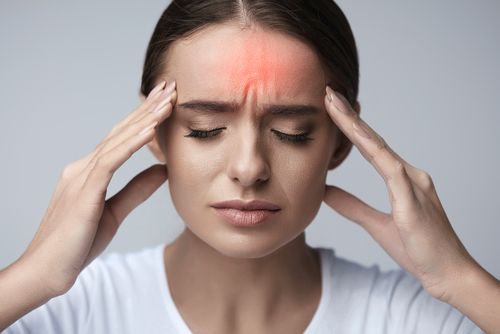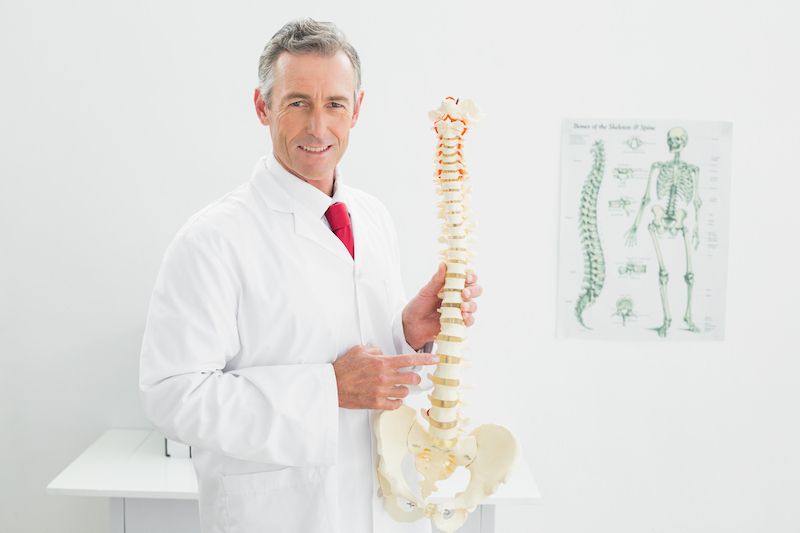
Conditions: Neck Pain
Neck pain is a relatively common ailment, which most of us will experience at least once in our lifetime. In most cases, neck pain will improve and disappear on its own, but if you frequently suffer from this problem, or find that conventional ways of relieving your pain are not working, you may want to consider chiropractic care.
About neck pain
The neck is a very important part of our body, containing the very top of the spine, called the cervical spine as well as many blood vessels and nerves that supply structures including our esophagus, larynx, trachea and thyroid gland. The neck is also home to major blood vessels including the carotid arteries and jugular veins.
When there is tension in the neck, it can have a significant impact on the flow of blood between the head and body, as well as cause compression of the nerves and potentially the spinal cord. When this happens, it can have an effect on other areas of the body, including the upper and lower limbs.
What causes neck pain?
In many instances, the exact cause of neck pain may never be known, but some of the most common causes believed to be behind the majority of cases include:
Sleeping in an awkward position
Bad posture
Trapped nerve
An injury, such as from a vehicle collision or fall
The pain you experience may also differ. It may be a constant dull ache or a sharp pain that occurs when you place your head a certain way or perform a specific movement, such as turning your head from side to side.
In many cases, neck pain may be accompanied by other symptoms, including swelling or inflammation in the neck, pain that radiates into the shoulders or upper arms, or headaches.

Conditions: Headaches
A headache is a very generalized term given to pain that is felt in the head or sometimes the neck. There are many different types of pain associated with headaches ranging from acute localized discomfort to a more generalized ache. Some headaches may appear suddenly and only last for a short period of time while others may build gradually and last for several hours.
Types of headaches
While experts have identified more than 150 different types of headaches, some are more common than others. These include:
Tension headaches
By far the most common type of headache is a tension headache, which is usually attributed to stress. They tend to come and go and cause mild to moderate pain with no other symptoms.
Migraines
Migraines are often considered to be more painful than a tension headache. They last longer ranging anywhere from a few hours to a few days and are usually accompanied by other symptoms such as sensitivity to light, smells, or sound, nausea and vomiting, blurred vision, and loss of appetite. Some people suffer from recurrent migraines and may experience multiple episodes in a short period of time.
Cluster headaches
Cluster headaches tend to occur in groups and even though no one is sure why are more common in men than women. The pain associated with a cluster headache tends to be a burning or piercing sensation that is localized behind or around one eye. It can also be so severe that the patient can’t function properly until the pain eases.
Sinus headaches
Sinus headaches tend to occur when one has a cold or sinus infection. With a sinus headache, the pain is felt in your cheekbones, forehead, or bridge of your nose where the sinuses are located since it is caused by the swelling of your sinuses. The pain usually decreases after taking anti-inflammatory pain medication.
There is a range of things that you can do to help with one-off headaches, such as taking pain medications, drinking plenty of water, and trying to relax somewhere calm and quiet. However, if you suffer from recurrent headaches, you may want to consider seeking chiropractic care, which has been shown to be very successful in providing relief and even helping prevent this type of pain.

Conditions: Sciatica
Sciatica is a condition that affects many people today. It typically manifests as pain in the lower back or buttocks that radiates down to the legs or feet. This pain can be felt in one or both legs and is often difficult to describe. Patients have also found that the pain can change in frequency or intensity ranging from mild to severe and can be debilitating at times. Patients have reported various sensations related to sciatica pain including pins and needles while at other times it may be described as dull, or even like electric shocks.
The discomfort that sciatica patients experience often causes them to be willing to try anything to alleviate the condition. Understanding a few things about sciatica may help you decide what is best for you.
What Causes Sciatica?
Sciatica is understood as a compression of the sciatic nerve. This compression can occur as the sciatic nerve leaves the spinal column and travels down to the legs and there are many possible causes of sciatica that vary in their severity.
Subluxations – subluxations occur when the vertebrae in the spine are misaligned. These misalignments can cause restrictions or pressure on different nerves. Subluxations on the sciatic nerve are a common occurrence for many patients.
Herniated or bulging discs – The padding or discs between the vertebrae can be damaged or deformed which can create issues with the sciatic nerve resulting in sciatica.
Pregnancy – The drastic changes that occur to a woman’s body during pregnancy can create issues along the pelvis and spinal column. Some of these issues may cause a problem with the sciatic nerve.
Tumors – A potentially severe issue occurs when a tumor grows in or along the spinal column. One of the first signs of tumor growth in your spine may be a change in sensation that is caused by the tumor placing pressure against your nerves. Your chiropractor can help diagnose the cause of your discomfort and ensure that you get the appropriate treatment.
Piriformis syndrome – The sciatic nerve travels underneath the piriformis muscle which can be damaged in slips or falls. If the muscle experiences a strain or tightness, it may affect the ability of the sciatic nerve to function. Cramping or twitching of this muscle can also trigger pain associated with sciatica.

Conditions: Herniated Disc
Intervertebral discs are found all throughout the spinal column except for the C1 and C2 vertebrae (the Axis and Atlas). These discs act to cushion the vertebrae from each other as well as the impacts that are felt throughout the spinal column. While many people will describe painful back issues as a “slipped disc,” this isn’t really the case as the intervertebral discs don’t actually slide out of place. What many people experience is called a bulge. This bulging disc is also called a herniated disc.
Causes of a Herniated Disc
Herniated discs may occur for a variety of reasons. A damaged disc may be the result of poor posture or due to the patient being overweight which places additional stress on the spinal column. Discs may also become herniated due to a sports or other traumatic injury.
Some patients have even suggested that a relatively minor activity, such as a sneeze, has caused a herniated disc. This is usually the end result of a long-term weakening of the disc that has been unnoticed until a small movement finally makes the injury apparent.
Signs of a Herniated Disc
The signs and symptoms of a herniated disc can vary widely. This is because damaged discs manifest in different ways at various points in the spinal column. For instance, discs that are damaged in the lower back may cause intense pain in the legs, lower back, or buttocks. But if the herniated disc is in the neck, pain is more likely to present in the shoulders or arms. The pain experienced from a herniated disc can also be felt as a sharp, shooting pain when you sneeze, cough, or move in a specific position.
Many people who have experienced a herniated disc also describe numbness or tingling in their extremities. This numbness and tingling may be felt in the same area as the pain which is related to the location of the herniated disc.
The longer that an individual goes with a herniated disc, the more likely they are to also experience weakness due to the inability of nerves to properly communicate with the affected body parts. The lack of a signal leads to muscle atrophy and a weakening of the muscles.

Chiropractic Care for an Active Lifestyle
If you are a person who enjoys an active lifestyle, the last thing that you want is to be sidelined by an injury or pain. While chiropractic care is often seen as a therapy that can help to heal an athlete, it can also be used to help make you more resilient and improve your overall athletic abilities.
While people who lead active lifestyles are typically aware of the overall benefits of their increased movement, there are also some drawbacks. Some injuries occur from overuse of joints or the increased impact that we impose on our joints from high-impact activities like running, skiing, or hiking which all can have effects on our necks and backs. Chiropractic care can not only help to reduce the pain we feel but a properly aligned back can also reduce the potential for future injuries.
Here are some of the other benefits of receiving regular chiropractic care when you participate in an active lifestyle.
Benefits
It is drug-free – We often associate visits to the doctor with an accompanied trip to the pharmacy to pick up a prescription. While taking medication may help to reduce pain, many people don’t like to take medications as they prefer to avoid introducing foreign chemicals into their bodies. Chiropractic care can offer the same benefits as many medications but avoids any side effects or unknown long-term issues that are associated with certain medications.
It is non-invasive – Many people use chiropractic therapy to avoid surgery. Chiropractic care does not require your body to be cut open or have an overnight hospital stay. Most chiropractic procedures can be done over your lunch break and leave you returning to work feeling better than you did that morning.
Prevents Injuries – Chiropractic care is used by a wide range of people for short- and long-term treatments. Speak with your chiropractor to develop a long-term plan that will help you avoid future injuries.
Improves Performance – Proper spinal health helps people move more freely which can result in their ability to train more effectively. This can help runners achieve faster mile times or other athletes compete at higher levels than they would have been able to otherwise.
Reduces Pain – When your spine isn’t properly aligned, everything you do can be affected. Many patients even have pain so severe that it affects their ability to breathe. When your spine is happy, it alleviates the pain associated with normal activities and can reduce the swelling or inflammation along your vertebrae.
Increases Strength – While chiropractic care is typically used for treatment, long-term use can increase your overall strength. Studies have shown that athletes who regularly visit the chiropractor are stronger than their competitors who do not.
Improves Relaxation – Chiropractic care isn’t just about cracking your back (although this does often happen) but is also about working through your entire spinal comfort. Chiropractic appointments often entail an extensive massage that works through multiple pressure points which is why you shouldn't be surprised if you feel an overall sense of improved relaxation after your appointments.

Conditions: Traumatic Brain Injury – TBI
Traumatic brain injury (TBI) is a brain injury resulting from a sudden blow or impact on your head, causing damage to your brain. The damage can be mild or severe. It can significantly impact your physical, cognitive, and emotional health.
Causes of TBI
TBI causes range from falls to sports-related injuries, car accidents, and violent assaults. The main causes of TBI are motor vehicle accidents and falls. Children, elderly adults, and military personnel can suffer from TBI.
Symptoms of TBI
TBI symptoms can include the following:
Headaches
Loss of consciousness
Loss of balance
Dizziness
Convulsions or seizures
Nausea or vomiting
Sensory changes, such as ringing in the ears or blurred vision
Fatigue or drowsiness
Disorientation or confusion
Mood changes
Disorientation or confusion
Diagnosing TBI
Diagnosing TBI can be challenging as its symptoms may not appear immediately after the injury. The diagnosis may involve a physical examination and a neurological evaluation. It also entails imaging tests, such as a CT scan or MRI. A thorough examination evaluation is necessary to determine the severity of the injury. It assists in developing an appropriate treatment plan.

Conditions: Joint Pain
Joint Pain: How Chiropractic Care Can Relieve Your Discomfort
Joints are important musculoskeletal structures that connect bones to one another. Some facilitate different types of movement while others remain fixed. Joint pain is a very common and often debilitating problem with around one-third of all adults experiencing it at some point during their lifetime. Fortunately, there are treatments that can help and one of the most effective is chiropractic care.
Here’s what you need to know about joint pain and how chiropractic care can help relieve discomfort.
Causes of joint pain
There are many different things that can cause joint pain. The most common is a condition called osteoarthritis. Osteoarthritis occurs when the protective cartilage that usually protects the ends of bones begins to deteriorate, causing them to rub against one another. This friction causes pain, swelling, and problems moving the joint.
Other potential causes of joint pain include but are not limited to:
Gout
Bursitis
Inflammation of the joint lining
Damage to the cartilage at the back of the kneecap
Bleeding into the joint space
A fracture to the bones of the joint
Other types of arthritis such as rheumatoid and psoriatic arthritis
Your chiropractor will be able to assess your condition to determine the cause of your joint pain and recommend chiropractic techniques to help ease your discomfort.

Acupuncture
Many people feel that acupuncture is a radical procedure and won't even consider trying it. However, when patients understand more about what it is and how it works, myths can be dispelled and patients are able better understand how it might benefit them. Whether or not you feel that it’s right for you, understanding more about acupuncture can help to open up your potential treatment options.
What is Acupuncture?
Acupuncture is a medical treatment that is often used for pain relief. The actual procedure involves inserting very thin needles in different spots in the body, at various depths. Scientific research suggests that while this does have a positive effect on treating pain, the specifics of how it works are still unclear. Some individuals suggest that acupuncture works through balancing vital energies, while others believe that it triggers a neurological response that helps to alleviate pain.
Acupuncturists believe that the balancing of your energy can help relieve pain, boost well-being and even cure some illnesses. Many patients use acupuncture to treat high blood pressure, headaches, joint pain, and even whooping cough.
How Does it Work
While science is still unclear on exactly how the process that acupuncture uses works, traditional Chinese medicine suggests that it balances the life forces or “Qi." Qi is an energy that is believed to flow through the meridians in the body. These energy flows can be accessed through 350 different acupuncture points in the body. When a needle is inserted into these points, it is believed to help restore the balance of energy.
While science cannot prove this theory, there is evidence that it does help with certain conditions. The scientific belief is that the acupuncture points are in areas where muscles, nerves, and connective tissue are likely to be stimulated. Stimulation of these areas increases blood flow which may be the reason that acupuncture can help with pain relief.
Treatments
Patients use acupuncture for a variety of reasons and additional research has found that acupuncture can help with several conditions.
These conditions are:
Tension headaches
Migraine headaches
Low back pain
Neck pain
Osteoarthritis
Joint pain
High and low blood pressures
Chemotherapy-induced nausea or vomiting
Ulcers
Painful menstrual cycles
Dysentery
Sciatica
Dental pain
Tennis elbow
Sprains
Allergic rhinitis
This is only a partial list based on separate scientific findings, but there are many other conditions that may be helped by acupuncture. If you believe that you may be a candidate, you should contact an acupuncturist today to find out.

Chiropractic Care for Kids
As parents, we always want what is best for our children. We are careful about the things that they are exposed to since we want to give them the best possible childhood in order to set them up for a successful future. When our kids become sick or injured, it can be a worrying time, and it can be challenging to identify the best path for their care.
Effective medications to treat childhood ailments are tough to come by. Prescription medications have some scary side effects which can become even more severe when given to our little ones. And the possibility of surgery looms as an even more frightening prospect.
Several childhood ailments lend themselves well to chiropractic care. In fact, chiropractors have been practicing their craft with children for more than a century. With the long history of successful treatments in children, it may be an option that is worth considering for your kids.
What is Chiropractic Care?
Chiropractic care is based on the relationship between the spine and the central nervous system. Our spinal cord houses the brain stem and all the nerves as they exit from the base of our skull and then pass through the spinal cord.
Nerves that control different parts of our body exit from the spinal column at specific vertebrae which means that if you are having an issue somewhere in your body, it may be linked to your spinal health. Chiropractors are specially trained to evaluate these possibilities.
Chiropractic Care and Children
Children and infants are subjected to a wide range of changes occurring rapidly to their bodies throughout their youth. This means that any injuries or issues should be addressed immediately in order to reduce the potential effects on your child’s future. Some of these problems may even occur to your child because of the growing process.
You may want to consider chiropractic care for your newborn too. While many women are aware of the baby’s positioning in utero, they aren’t told about the stresses that this may place on your child’s spine.
Many infant issues may be directly related to problems with the spine or the nervous system that may be corrected with chiropractic care. You should schedule an appointment with a chiropractor if your infant is experiencing issues with:
Colic
Reflux
Breastfeeding
Chronic infections
Sleep patterns
Allergies
Chiropractic care is non-invasive and doesn’t involve your child taking any medication and is, therefore, a safe option to gain more insight and weigh different treatment options.

Chiropractic Senior Care
Many Seniors today believe that aging and pain are synonymous. While aging is a natural part of our lives, pain in our bodies is a signal that something isn’t right. Some diseases like arthritis can attack the joints and cause inflammation, pain, and reduce our ability to move. However, the intensity or amount of pain that you experience is often an unnecessary side effect, and there are ways to help reduce or eliminate these problems. If you haven’t considered contacting a chiropractor, then you should keep reading as there are several benefits that chiropractors can offer you to increase your quality of life during your Golden Years.
Pain Relief
Pain relief is one of the most common reasons that any patient visits with their chiropractor. While it is common to consider visiting a chiropractor for neck or back pain, you may consider a consultation for any type of discomfort.
Chiropractors commonly adjust the spinal column which houses your brain stem and the nerves that travel throughout your body after passing through your vertebrae. This means that if you are having discomfort anywhere in your body, it may be resolved or reduced by making sure that the nerve can easily pass signals to the brain.
Increased Range of Motion
Many seniors will tell you that aging commonly attacks their joints. Painful and inflamed joints can restrict the body’s ability to move freely and over time, as these muscles go unused, they begin to shrink and become weaker. After a visit with their chiropractor, many senior golfers have found that they have gained distance in their drives and gardeners find that they can finally collect their harvest without pain for the first time in years.
Better Balance and Movement
As the bones and muscles in our necks begin to deteriorate, one of the first signs can be a change in our ability to maintain balance. There are specific structures called mechanoreceptors that reside in our cervical spine and are partially responsible for helping us maintain our balance. As we age, they often experience some minor defects. Chiropractic care has been shown to help restore and stimulate the mechanoreceptors function which leads to an increase in our ability to balance. Improved balance can also mean fewer falls and a decreased chance of injury.



